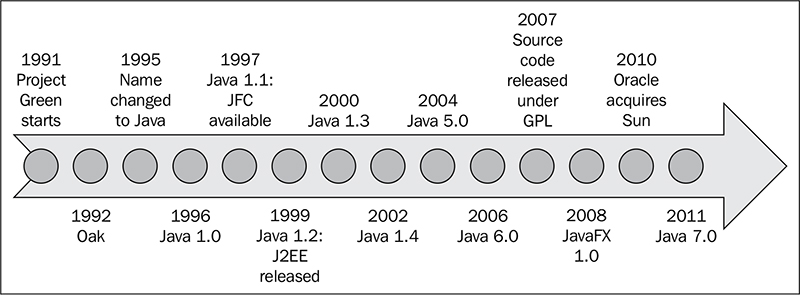Understanding the Java Programming Language
This introductory module provides the foundation for working with Java. You will explore key language features, object-oriented programming concepts, and essential libraries that make Java one of the most widely used programming languages in the world. Topics include packages, interfaces, graphics, concurrency, exceptions, input/output, and networking. Course projects reinforce these concepts through practical, hands-on development.
Course Goals
By the end of this module, you will be able to:
- Object-Oriented Design: Organize Java classes into packages and understand the use of interfaces.
- Graphics Programming: Use the Abstract Window Toolkit (AWT) to draw shapes, text, and images.
- Concurrency: Understand the role of threads and build multithreaded Java applications.
- Error Handling: Use exceptions to detect and handle runtime errors gracefully.
- Data Processing: Read and write data using Java streams.
- Networking: Transfer information across networks using Java’s built-in APIs.
Why Java Matters
Originally created at Sun Microsystems in the mid-1990s by James Gosling, Mike Sheridan, and Patrick Naughton, Java was first called Oak. It quickly became popular due to its guiding principle: “Write Once, Run Anywhere.”
Key strengths of Java include:
- Object-oriented design: Cleanly models real-world systems with classes and objects.
- Platform independence: Programs compile into bytecode executed by the Java Virtual Machine (JVM).
- Memory management: Automatic garbage collection reduces memory leaks common in C and C++.
- Rich standard library: Built-in support for threads, networking, security, and GUI development.
Java syntax is modeled after C and C++, making it familiar to many developers while adding strong compile-time and runtime checks to improve reliability.
Java Through the Years
Java has evolved through long-term support (LTS) releases and rapid 6-month feature updates. Below is a condensed timeline of major milestones:
- 1996 - JDK 1.0: Initial release with AWT, applets, networking.
- 1998 - J2SE 1.2: Swing, Collections framework, stricter floating-point.
- 2004 - Java SE 5 (Tiger): Generics, annotations, enhanced for-loop, concurrency utilities.
- 2006 - Java SE 6: Web services, scripting support, performance improvements.
- 2011 - Java SE 7: Diamond operator, NIO.2, try-with-resources.
- 2014 - Java SE 8: Lambdas, streams, new Date/Time API.
- 2017 - Java SE 9: Module system (Project Jigsaw), JShell REPL.
- 2018 - Java SE 11 (LTS): HTTP client, removal of Java EE modules.
- 2021 - Java SE 17 (LTS): Records, sealed classes, switch expressions.
- 2023 - Java SE 21 (LTS): Virtual threads (Project Loom), pattern matching, record patterns.
- 2025 - Java SE 23 (LTS): Latest long-term release with continued improvements in performance, language features, and cloud integration.
